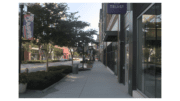by John A. Tures, Professor of Political Science, LaGrange College
Back in 2001, Kodak had a hit slogan “Share Moments, Share Life” for their camera company. In Cobb County, speed cameras are about ready to affect quite a few lives with some shared moments. And revenue sharing is part of the debate too. Will these speed cameras make a difference? And who will get the money from the tickets?
Cobb County Commissioners are proposing to expand speed cameras throughout the county. Currently, they are only allowed in school zones. But under the new plan, municipalities could expand where they install speed cameras, with the idea that the revenue that they get could be funneled to local law enforcement. That’s led to two sets of debates: should we have more speed cameras, and who should get the money.
“Speeding is a problem,” admits State Representative Don Parsons of District 44, as cited by the Marietta Daily Journal. “It kills people.” His issue is not with the cameras, but what speeds they are set at. “Sometimes speed limits are set too low to kind of catch people when they think it should be a little higher and to catch people for revenue…I think that’s one of the main reasons there’s some opposition to it.”
Cobb District Attorney Flynn Broady argued that speeding is a real public safety concern, according to the Marietta Daily Journal. “Over the past 12 months, his office has handled 99 felony traffic cases, he [the D.A.] said. Seventy-five percent involved excessive speed. Of those 99 cases, nine involved homicide-by-vehicle charges. Another 11 of the 99 resulted in serious injuries but no deaths. Homicides by vehicle represent a quarter of all homicides in Cobb over the past 12 months,” Broady added.
How well do these speed cameras work? A study out of South Wales in the United Kingdom by Christie, Lyons, Dunstan and Jones found that for mobile speed cameras, a “route-based method” (up to 500 meters) worked better than a circular zone around the camera. Titled “Are mobile speed cameras effective? A controlled before and after study” the authors found that over a two-year period, there were huge decreases in crashes both in the day and at night, for moderate speeds and high speeds (60—70 mph) and reduced injuries to pedestrians and motorcyclists, not just those in cars, by more than 50%.
Li, Graham and Majumdar also did some research on “speed limit enforcement cameras” in the United Kingdom, which were introduced in 1991. Their article “The impacts of speed cameras on road accidents: An application of propensity score matching methods” found the cameras had a strong effect on the number of crashes and the damage they cause. “There are significant reductions in the number of accidents of all severities at speed camera sites. It is suggested that the propensity score can be used as the criteria for selecting the reference group in before-after control studies. Speed cameras were found to be most effective in reducing accidents up to 200 meters from camera sites and no evidence of accident migration was found.”
Research of mine uncovered an article in the journal Safety Science. This study by DePauw, Daniels, Brijs, Hermans and Wets, analyzed 65 fixed speed cameras over a five-year period on Flanders-Belgium highways. Looking at statistics from before and after the camera installation, the authors found an 8% decrease in the number of injury crashes. But when it comes to the most severe cases of collisions, the effect of the cameras was more pronounced.
“In the case of the more severe crashes with serious and fatal injuries, a decrease of 29% was found, significant at the 5% level,” the authors find. “A favorable effect is found for all road user categories (car occupants, cyclists, moped riders, motorcyclists and pedestrians), with a higher decrease in the number of injured road users at the treated locations compared to the general trend. It can be concluded that speed cameras have a favorable effect on traffic safety, mainly on severe crashes.”
The evidence does show the ability of these safety cameras to reduce crashes and fatalities. The only questions that remain are whether residents are willing to experience perhaps an increase in tickets and fines, and where the revenue will go. And there’s concern over who will get the money from those fines. But that’s a subject for another column.
John A. Tures is a professor of political science at LaGrange College in LaGrange, Georgia. His views are his own, and do not speak for LaGrange College faculty, students, staff or administration. He can be reached at jtures@lagrange.edu. His Twitter account is JohnTures2.





